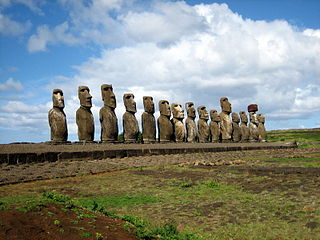 W
WA Stone sculpture is an object made of stone which has been shaped, usually by carving, or assembled to form a visually interesting three-dimensional shape. Stone is more durable than most alternative materials, making it especially important in architectural sculpture on the outside of buildings.
 W
WThe Airtam Frieze is a sculpture in stone of women, musicians from Kushan Bactria dating to the 1st or 2nd century A.D. Five musicians are represented among acanthas leaves, playing double-flute, drum, lute, harp and cymbals. The sculpture has been thought to have been part of the walls or the entrance of a Buddhist temple.
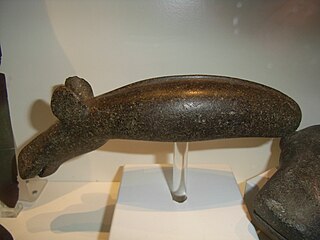 W
WThe Alunda moose or the Alunda axe is a Neolithic stone axe c.2000 B.C.that was found during the excavation of a ditch in Norrlövsta i Alunda parish, Östhammar Municipality, Uppland in 1920. The Alunda moose is considered one of the most beautiful animal sculptures of the Nordic neolithic and is a 21 cm. ceremonial axe carved from greenish black diorite. One side is shaped like a moose head. The sculpture was realized in a naturalistic and elegant manner. The axe has a shaft hole but only had a symbolic function since the hole is not completely bored through and the axe hasn't been used in battle. The axe may originate from Karelia where similar animal depictions are known. It is displayed in the Swedish History Museum.
 W
WIn the burial practices of ancient Rome and Roman funerary art, marble and limestone sarcophagi elaborately carved in relief were characteristic of elite inhumation burials from the 2nd to the 4th centuries AD. At least 10,000 Roman sarcophagi have survived, with fragments possibly representing as many as 20,000. Although mythological scenes have been quite widely studied, sarcophagus relief has been called the "richest single source of Roman iconography," and may also depict the deceased's occupation or life course, military scenes, and other subject matter. The same workshops produced sarcophagi with Jewish or Christian imagery. Early Christian sarcophagi produced from the late 3rd century onwards, represent the earliest form of large Christian sculpture, and are important for the study of Early Christian art.
 W
WThe Athena relief of Sömek is a Greco-Roman rock relief, located some two kilometres north of the village of Sömek in Silifke district of Mersin province in Turkey, near the valley of the Limonlu river, the ancient Lamos. In antiquity, the river formed the border between "Rugged Cilicia" in the west and "Flat Cilicia" in the east.
 W
WBird stones are prehistoric, abstract stone carvings made by Native Americans. The artifacts were a common inclusion in graves and thought to have ceremonial importance. They are noted for their distinctive simplicity and beauty. They first appeared in the middle Archaic period around 5,000 years ago and continued into the early Woodland period to about 2,500 years before present.
 W
WBorgåsgubben is a 10-foot-tall male figure statue made of different sizes of stone-bricks put together. He stands on top of a mountain called Borgåsen, in Källtegen, Blomskog, Årjäng, Sweden. Why he was put there is unknown, but rumor has it that he was put there to frighten off enemies. It was supposed to give those attacking a vision of a living guard post. It was built in times of war between Sweden and Norway around 1600-1700. Many believe that the stone statue was made by soldiers called caroleans, soldiers that served in the army under the Swedish King Charles XII's rule. Charles and his soldiers were passing by and were on their way to Fredriksten fortress in Norway when they stopped in Blomskog.
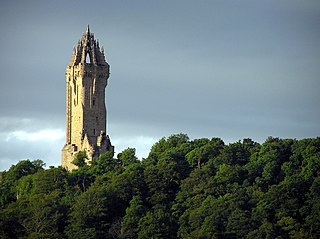 W
WThe National Wallace Monument is a tower standing on the shoulder of the Abbey Craig, a hilltop overlooking Stirling in Scotland. It commemorates Sir William Wallace, a 13th- and 14th-century Scottish hero.
 W
WSeveral sculpted busts of Pope Urban VIII were created by the Italian artist Gianlorenzo Bernini, with varying amounts of assistance from other artists in his workshop:
 W
WThe Arc of the Covenant or The Cathedral is a sculpture by the French artist Auguste Rodin, conceived in 1908. It shows two intertwined right hands belonging to two different figures. Originally carved in stone, it was later cast in various editions in bronze.
 W
WA chacmool is a form of pre-Columbian Mesoamerican sculpture depicting a reclining figure with its head facing 90 degrees from the front, supporting itself on its elbows and supporting a bowl or a disk upon its stomach. These figures possibly symbolised slain warriors carrying offerings to the gods; the bowl upon the chest was used to hold sacrificial offerings, including pulque, tamales, tortillas, tobacco, turkeys, feathers and incense. In an Aztec example, the receptacle is a cuauhxicalli. Chacmools were often associated with sacrificial stones or thrones.
 W
WThe Colossi of Memnon are two massive stone statues of the Pharaoh Amenhotep III, who reigned in Egypt during the Eighteenth Dynasty of Egypt. Since 1350 BCE, they have stood in the Theban Necropolis, located west of the River Nile from the modern city of Luxor.
 W
WStone Mountain is a quartz monzonite dome monadnock and the site of Stone Mountain Park, 16 miles (26 km) east of Atlanta, Georgia. Outside the park is the small city of Stone Mountain, Georgia. The park is the most visited tourist site in the state of Georgia.
 W
WCrawford Market Fountain or Lockwood Kipling Fountain is a listed heritage structure in Crawford Market, Mumbai that was erected in 1874, and was designed by William Emerson, the British architect who also designed the market. The style is a mix of Greek Revival and Neo-Gothic, and the four carvings depicting the Indian river goddesses and native birds were done by John Lockwood Kipling, who was the principal at Sir Jamsetjee Jeejebhoy School of Art.
 W
WThe Didarganj Yakshi is one of the finest examples of very early Indian stone statues. It used to be dated to the 3rd century BCE, as it has the fine Mauryan polish associated with Mauryan art. But this is also found on later sculptures and it is now usually dated to approximately the 2nd century CE, based on the analysis of shape and ornamentation, or the 1st century CE. The treatment of the forelock in particular is said to be characteristically Kushan.
 W
WDol hareubangs, also called tol harubangs, hareubangs, or harubangs, are large rock statues found on Jeju Island off the southern tip of South Korea. They are considered to be gods offering both protection and fertility and were placed outside of gates for protection against demons travelling between realities.
 W
WThe Durand Stone is an artifact in Bahrain dating back to the Kassite period. Named after Captain Edward Law Durand who had first identified it, the stone is a 25–30 cm wide and 70–80 cm long black basalt sculpture in the shape of a prow of a boat or an animal's tongue, with a cuneiform inscription.
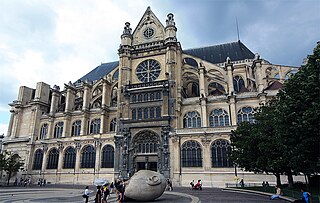 W
WÉcoute is a sculpture by French artist Henri de Miller in Paris. It is a giant stone head with cupped hand in front of the Church of St-Eustache. It is near to another sculpture by the same artist; a very large sundial designed by the astronomer Dandrel and made by the sculptor, in the Jardin des Halles, above the Forum des Halles.
 W
WThe End of the Twentieth Century is a monumental installation by the German artist Joseph Beuys from 1983, at the Hamburger Bahnhof, in Berlin.
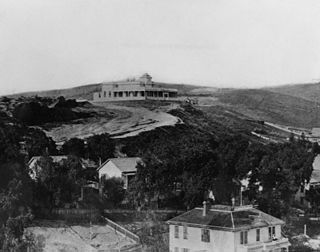 W
WFort Moore was the second of two historic U.S. Military Forts in Los Angeles, California, during the Mexican–American War. It lay straight above the junction of the Hollywood Freeway and Broadway, on an historic hill that once sheltered the old Plaza.
 W
WThe Glenfinnan Monument is a Category A listed monument in Glenfinnan, Scotland. Designed by James Gillespie Graham, the monument is dedicated to the soldiers of Loudon's Highlanders, who fought in the Jacobite rising of 1745.
 W
WAn inuksuk or inukshuk is a manmade stone landmark or cairn built for use by the Inuit, Iñupiat, Kalaallit, Yupik, and other peoples of the Arctic region of North America. These structures are found in northern Canada, Greenland, and Alaska. This combined region, north of the Arctic Circle, is dominated by the tundra biome and has areas with few natural landmarks.
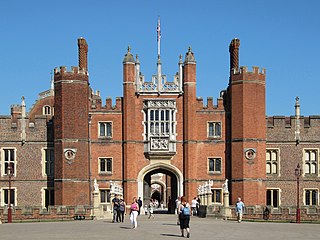 W
WHampton Court Palace is a Grade I listed royal palace in the London Borough of Richmond upon Thames, 12 miles south west and upstream of central London on the River Thames. Building of the palace began in 1514 for Cardinal Thomas Wolsey, the chief minister of King Henry VIII. In 1529, as Wolsey fell from favour, the cardinal gave the palace to the king to check his disgrace. The palace went on to become one of Henry's most favoured residences; soon after acquiring the property, he arranged for it to be enlarged so that it might more easily accommodate his sizeable retinue of courtiers. Along with St James' Palace, it is one of only two surviving palaces out of the many the king owned. The palace is currently in the possession of Queen Elizabeth II and the Crown.
 W
WKlácelka is a man-made cave in a forest near Liběchov, Czech Republic. It is known for its complex of sculptural works made by sculptor Václav Levý. The name of the cave and the sculptures commemorate František Klácel, a theologian and philosopher. It was created during the 1840s.
 W
WA kudurru was a type of stone document used as a boundary stone and as a record of land grants to vassals by the Kassites in ancient Babylonia between the 16th and 12th centuries BCE. The word is Akkadian for "frontier" or "boundary". The kudurrus are the only surviving artworks for the period of Kassite rule in Babylonia, with examples in the Louvre, the British Museum, and the National Museum of Iraq.
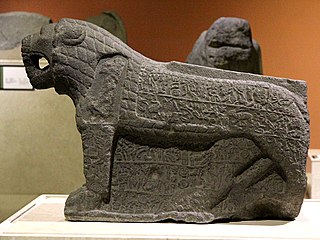 W
WThe Maraş lion is a Late Hittite sculpture of a lion with a hieroglyphic inscription. It was discovered on the citadel of Kahramanmaraş in 1883 and is displayed in the Kahramanmaraş Archaeological Museum. John David Hawkins assigned it the name Maraş 1, while Winfried Orthmann used Maraş B/1. Massive sculptures of lions are a recurrent feature of Hittite art, especially in the Neo-Hittite period.
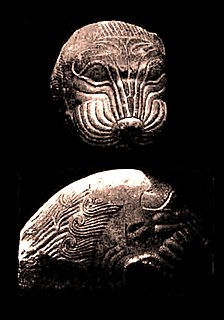 W
WThe Masarh lion is a stone sculpture found at Masarh, a village near Arrah town in the Bhojpur district in the Indian state of Bihar. This sculpture is generally dated to the 3rd century B.C.
 W
WThe Monument to the Victims of the Soviet Occupation is a proposed monument in Chișinău, Moldova.
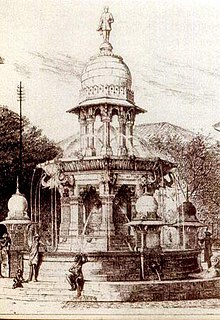 W
WMulji Jetha Fountain is a listed heritage structure in Fort, Mumbai that was erected in 1894, following a commission by Ruttonsee Mulji, a cotton merchant who sought to commemorate the death of his only son, Dharamsi Mulji, who died aged 15 in 1889. The statue of a boy on top holding a book represents the son who loved reading. The drinking fountain was designed by architect Frederick William Stevens, and he was assisted by John Griffiths, the then principal of Sir Jamsetjee Jeejebhoy School of Art.
 W
WThe Olmec colossal heads are stone representations of human heads sculpted from large basalt boulders. They range in height from 1.17 to 3.4 metres. The heads date from at least 900 BC and are a distinctive feature of the Olmec civilization of ancient Mesoamerica. All portray mature individuals with fleshy cheeks, flat noses, and slightly-crossed eyes; their physical characteristics correspond to a type that is still common among the inhabitants of Tabasco and Veracruz. The backs of the monuments often are flat. The boulders were brought from the Sierra de Los Tuxtlas mountains of Veracruz. Given that the extremely large slabs of stone used in their production were transported over large distances, requiring a great deal of human effort and resources, it is thought that the monuments represent portraits of powerful individual Olmec rulers. Each of the known examples has a distinctive headdress. The heads were variously arranged in lines or groups at major Olmec centres, but the method and logistics used to transport the stone to these sites remain unclear. They all display distinctive headgear and one theory is that these were worn as protective helmets, maybe worn for war or to take part in a ceremonial Mesoamerican ballgame.
 W
WThe Oscar Wilde Memorial Sculpture is a collection of three statues in Merrion Square in Dublin, Ireland, commemorating Irish poet and playwright Oscar Wilde. The sculptures were unveiled in 1997 and were designed and made by Danny Osborne.
 W
WA picture stone, image stone or figure stone is an ornate slab of stone, usually limestone, which was raised in Germanic Iron Age or Viking Age Scandinavia, and in the greatest number on Gotland. More than four hundred picture stones are known today. All of the stones were probably erected as memorial stones, but only rarely beside graves. Some of them have been positioned where many people could see them at bridges and on roads.
 W
WA puteal is a classical wellhead built around a water well's access opening.
 W
WThe Soldiers' Monument is a controversial memorial monument at the center of the Santa Fe Plaza. It was erected as a 33 feet (10 m) stone cenotaph, consisting of an obelisk and a plinth during 1867-1868. During the late nineteenth century, the monument was used for annual Memorial Day events, a place for Union veterans to gather, decorate the cenotaph, and hear brief presentations.
 W
WA statue of Alan Turing, created in slate by Stephen Kettle in 2007, is located at Bletchley Park in England as part of an exhibition that honours Turing (1912–1954). It was commissioned by the American businessman and philanthropist Sidney Frank (1919–2006).
 W
WThe Statue of Iddi-Ilum is a 21st-century BCE statue of the praying figure of Iddi-ilum, the military governor, or Shakkanakku, of the ancient city-state of Mari in eastern Syria. The headless statue was discovered at the Royal Palace of Mari during excavations directed by French archaeologist André Parrot. The statue was made of soapstone and bears an inscription identifying the figure and dedicating it to the goddess Ishtar or Inanna. The statue is now displayed at the Musée du Louvre in Paris. He was contemporary of the Third Dynasty of Ur, and probably their vassal.
 W
WStatue of Janko Kráľ is located in the middle of Sad Janka Kráľa in the Petržalka borough in Bratislava, Slovakia.
 W
WThe Statue of Sir Walter Scott is a Category C listed monument at the South Inch public park in Perth, Perth and Kinross, Scotland. Standing where Marshall Place and King's Place merge, at King Street, it is dedicated to Sir Walter Scott, author of The Fair Maid of Perth in 1828. The statue is the work of John Cochrane and Brothers, and was completed in 1845 as one of their final works before leaving for Canada. It was accidentally acquired by the city magistrates at the sale of a local sculptor's stock.
 W
WA stele, or occasionally stela, when derived from Latin, is a stone or wooden slab, generally taller than it is wide, erected in the ancient world as a monument. The surface of the stele often has text, ornamentation, or both. These may be inscribed, carved in relief, or painted.
 W
WThe Stele of Ushumgal is an early Sumerian stone tablet, dating to the Early Dynastic I-II, and probably originating from Umma. It is currently located in the Metropolitan Museum of Art, New York.
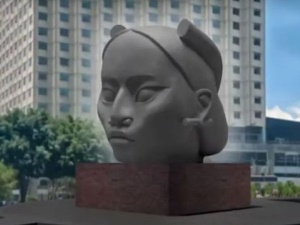 W
WTlalli is a still-in-progress sculpture of a large indigenous woman's head by contemporary artist Pedro Reyes. It had been proposed to replace the Monument to Christopher Columbus along Mexico City's Paseo de la Reforma.
 W
WWe Are Our Mountains is a large monument north of Stepanakert, the capital city of the Republic of Artsakh. The sculpture, completed in 1967 by Sargis Baghdasaryan, is widely regarded as a symbol of the Armenian heritage of the region. The monument is made from volcanic tufa and depicts an old man and woman hewn from rock, representing the mountain people of Karabakh. It is also known as "tatik-papik" (տատիկ-պապիկ) in Armenian, which translates as "Grandmother and Grandfather". The sculpture is prominent in Artsakh's coat of arms.
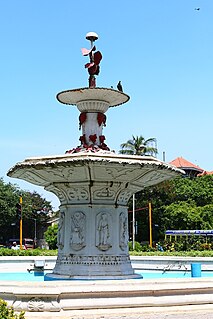 W
WWellington Fountain is a listed heritage structure in front of Maharashtra Police Headquarters at Shyamaprasad Mukherjee Chowk in Fort, Mumbai,which is part of Mumbai's Victorian ensemble that is a UNESCO World Heritage Site. It was erected in 1865 to commemorate the visits of Arthur Wellesley, 1st Duke of Wellington, who came to India in 1801 and 1804.
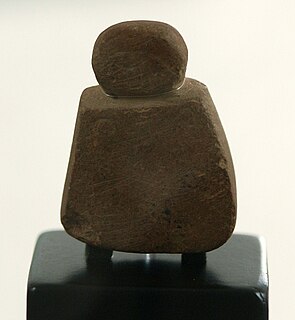 W
WThe Westray Wife is a small Neolithic figurine, 4 centimetres (1.6 in) in height, carved from sandstone. It was discovered during an Historic Scotland dig at the Links of Noltland, on Westray, Orkney, Scotland, in the summer of 2009. It was the first Neolithic carving of a human form to have been found in Scotland, and to date it is the earliest depiction of a face found in the United Kingdom.
 W
WThe stone-carved Zimbabwe Bird is the national emblem of Zimbabwe, appearing on the national flags and coats of arms of both Zimbabwe and Rhodesia, as well as on banknotes and coins. It probably represents the bateleur eagle or the African fish eagle. The bird's design is derived from a number of soapstone sculptures found in the ruins of the medieval city of Great Zimbabwe.
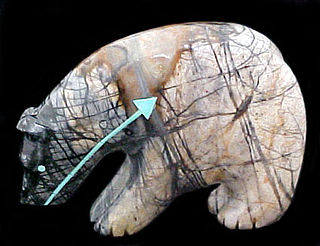 W
WZuni fetishes are small carvings made from primarily stone but also shell, fossils, and other materials by the Zuni people. Within the Zuni community, these carvings serve ceremonial purposes for their creators and depict animals and icons integral to their culture. As a form of contemporary Native American art, they are sold with secular intentions to collectors worldwide. Prior to the establishment of a non-Native market for fetishes, Hopi, Navajo, and other Pueblo peoples, especially at Kewa Pueblo also carved and used fetishes.